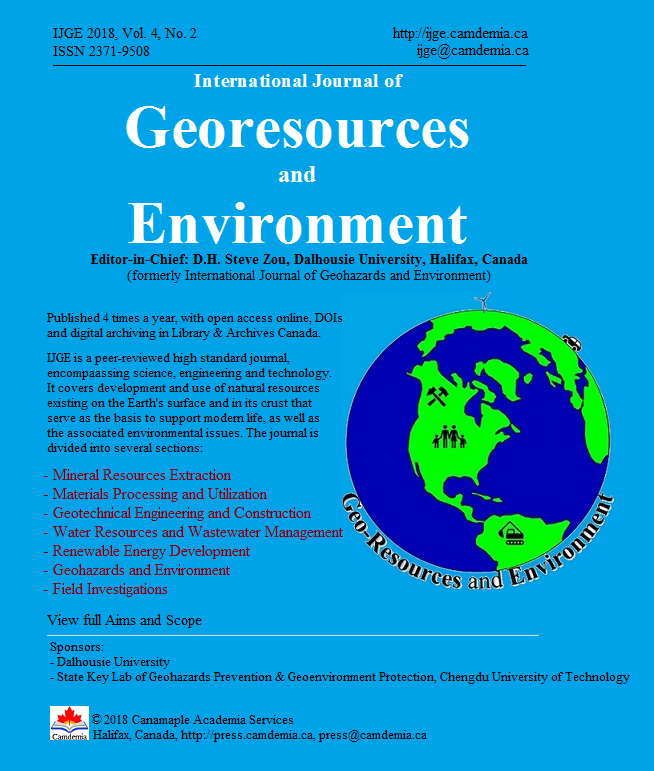Analysis of Abnormal Use of Cement Paste in Perfusion during Tunnel Construction using TBM
DOI:
https://doi.org/10.15273/ijge.2018.02.005Keywords:
rock burst, TBM double shield construction, perfusion, cement slurry, over-irrigationAbstract
During underground tunnel construction, rock burst causes substantial problems and impacts on the perfusion material use. This article explores the influences of rock burst on a construction project in a highly complex geological area in Tibet, including segment oscillation, injection port design, segments sealing, and slurry leakage, which contribute to the abnormal use of cement slurry during TBM tunneling. After comprehensively examined the reasons for the abnormal cement slurry filling during the TBM tunneling, we reach the conclusions that, in this tunnel, it is normal for the cement slurry volume to exceed its originally designed volume. The multiple factors affecting the cement slurry perfusion can be classified into three categories, including geological factors such as high ground stress, rock burst, and the complexity of the tectonic structure, human-made factors such as imperfect segment design and infusion hole design, and mechanical factors such as the reserved deformation and excavation adjustment due to rock burst. Abnormal perfusion does not result in any decreased quality in the backfill perfusion. Based on these conclusions, this paper also proposes recommendations to solve the abnormal use of the cement filling during the tunneling.
Downloads
Issue
Section
License
Copyright, Terms and Conditions
The International Journal of Geohazards and Environment (the Journal) is published by Canamaple Academia Services (the Publisher) online with open access, under a Creative Commons Attribution-Noncommercial license (CC-BY-NC) (http://creativecommons.org/licenses/by-nc/4.0/). Authors (the Authors) submitting papers (the Work) for publication in the Journal automatically agree to the following terms and conditions.
1. Under the license (CC-BY-NC), Authors give permission for others to share and reuse the Work, as long as the original source and author(s) are properly cited (i.e. a complete bibliographic citation and link to the Journal website) and the material is not used for commercial purposes. Any sharing or reuse must however indicate the original CC-BY-NC license terms of the work.
2. Authors transfer and assign to the Publisher all copyright in and to the Work. However Authors retain all proprietary rights except the copyright, related to the Work and also retain the rights a) to use, reproduce, distribute, and publicly display the Work in any medium in connection with the Authors‘ academic and professional activities, such as teaching, presentations and lectures, b) to create derivative works from the Work and to make full use of the Work in future research and publications, c) to authorize others to make any non-commercial use of the Work, d) to make both the pre-published and final-published versions available online in institutional and/or disciplinary repositories or on their own websites with a citation and link to the original paper published in the Journal.
3. Authors warrant that the Work is their original work, it is not copied from anywhere or anyone else, they are totally responsible for the authenticity, originality, validity and accuracy, and the facts and views are their own, that the Work contains no matter which is defamatory or infringes any literary or proprietary rights, intellectual property rights, or any rights of privacy, and that the Work has not been simultaneously submitted to any other journals or publishers. Authors further agree that their manuscripts whether accepted or rejected will not be returned and the rejected manuscripts will be disposed at the journal editor's discretion.
Disclaimer: The Publisher, the Journal and the editors accept no responsibility for statements or opinions expressed by authors. Use of information and materials in the Journal is the sole responsibility of users.


